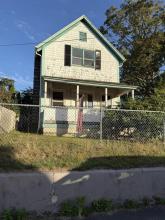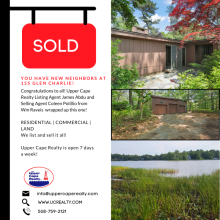Land Trust president: open space brings a different kind of 'green' to town
For every dollar of taxes collected on residential houses, taxpayers spend $1.04 on services those houses need.
“Schools, EMS, stormwater, streetlights. It’s not a great deal,” said Kevin Bartsch, the president of the Wareham Land Trust. “Open land and agriculture don’t need any of those services.”
On Saturday, Bartsch presented "Trends and Economics of Preserving Open Space in Wareham." The talk, held in the Wareham Free Library, touched on how preserving open space is easy on the environment and wallet.
Bartsch said he's certain that protecting open space does not impede economic development for the town at all. “So many people think that by not developing land, the town is losing tax money that could be collected on it,” he explained. “The myth of lost tax revenue to undeveloped land is exactly that.”
Open space, Bartsch argued, pays for itself. A 2013 economic analysis of Massachusetts’ parks and open space, done by the Trust for Public Land, notes that for every dollar spent in land conservation in Massachusetts, there is a $4 return in value.
That return in value comes from water quality protection, air pollution removal, floodwater mitigation and stormwater management. The plants and trees on undeveloped land take harmful pollutants from the air, and act as sinks for nitrogen.
Bartsch pointed to a graph detailing 2016 data provided by the Wareham Board of Assessors. In comparison to residential development, developed industrial land pays only $.46 for every dollar collected. Agricultural land and open space cost taxpayers only $.43 to every dollar collected.
Twenty-five percent of Wareham’s land area is already developed, and a further 14 percent is protected open space. However, 52 percent of Wareham’s land is currently undeveloped and unprotected, ready either for development or conservation.
Bartsch points out that Wareham’s 3,256 acres of protected space is actually on the low end of protected land within the adjacent towns.
Bourne leads the nearby towns in conservation, with 47 percent of their undeveloped land protected – although Bartsch points out that a good portion of the wetlands in the town can’t be developed. Marion and Mattapoisett, who have protected 40 percent and 31 percent of their undeveloped land respectively, “are doing quite well.”
Bourne, Marion and Mattapoisett also have the lowest tax rates per household, something that Bartsch says is due to various factors. But, he maintains, there is a consistent link between a higher amount of open space and lower tax rates per household.
"Development will occur," Bartsch said. "But open spaces preserve the character of a town, and they have a tremendous economic benefit as well."














